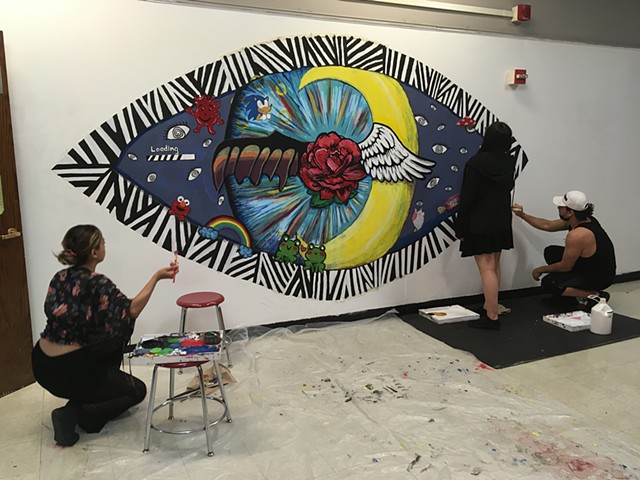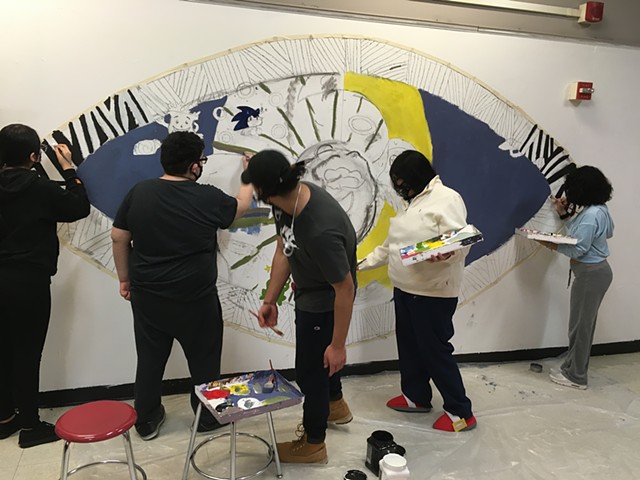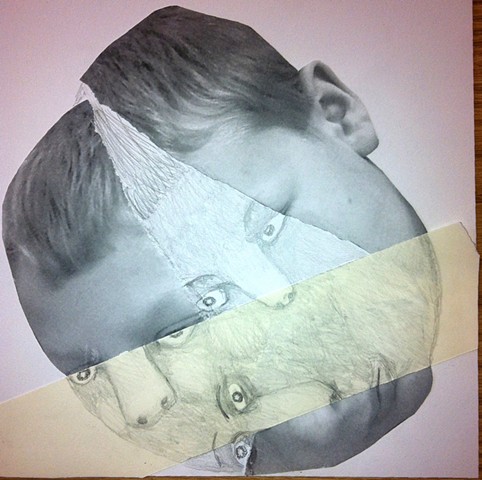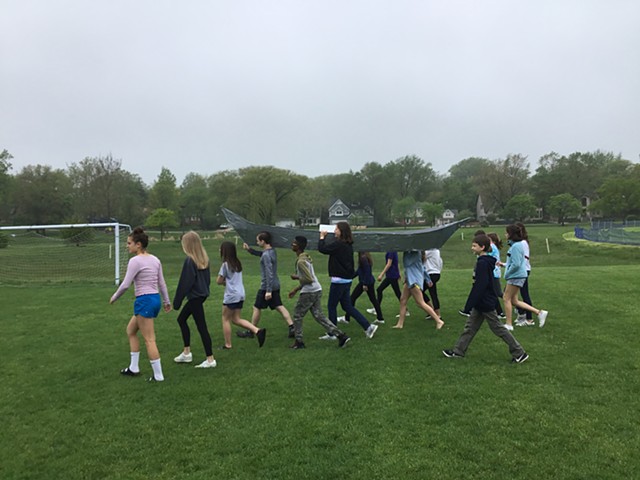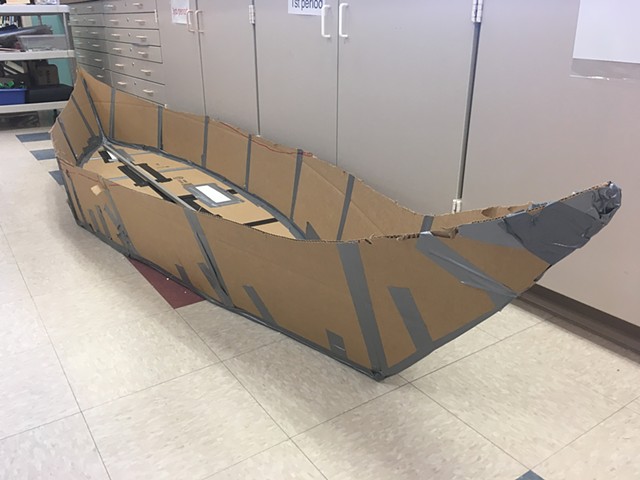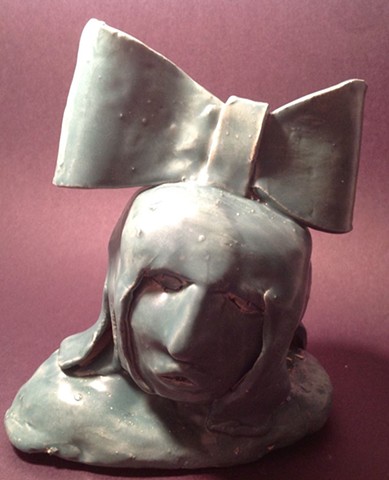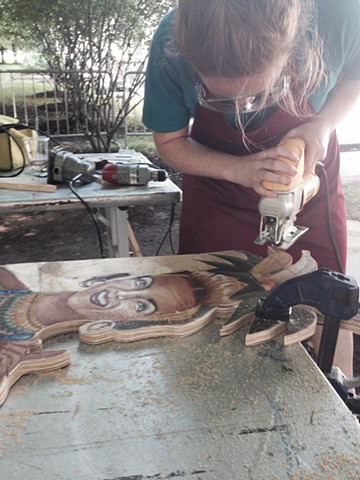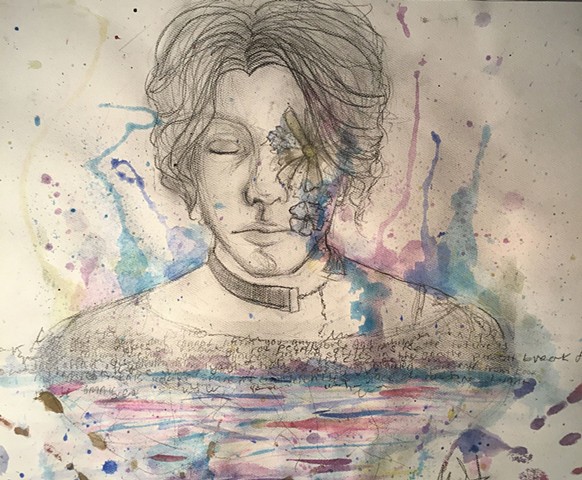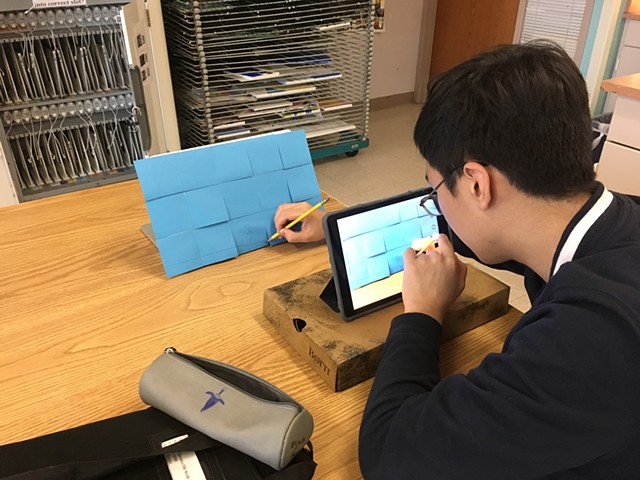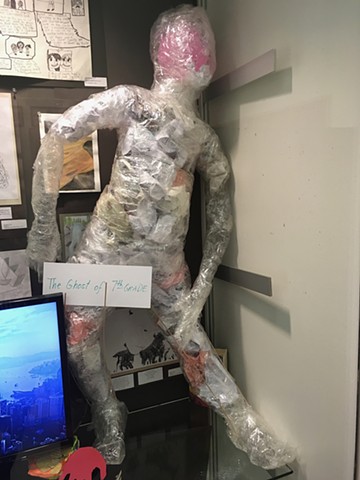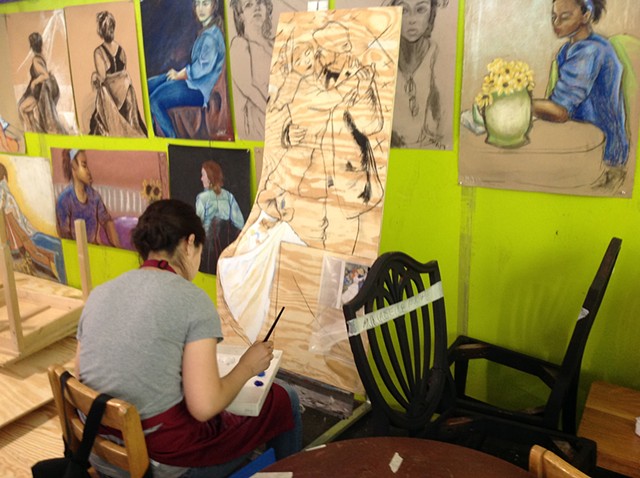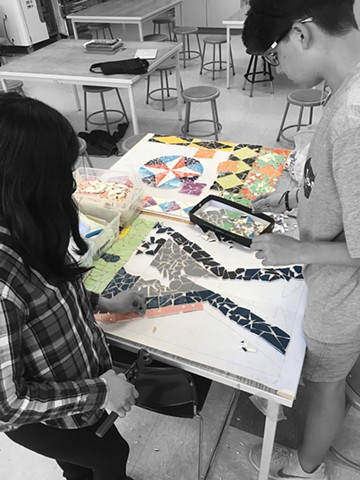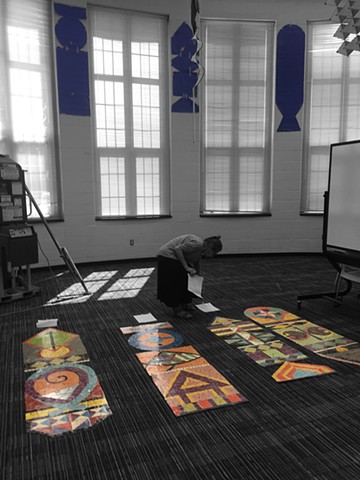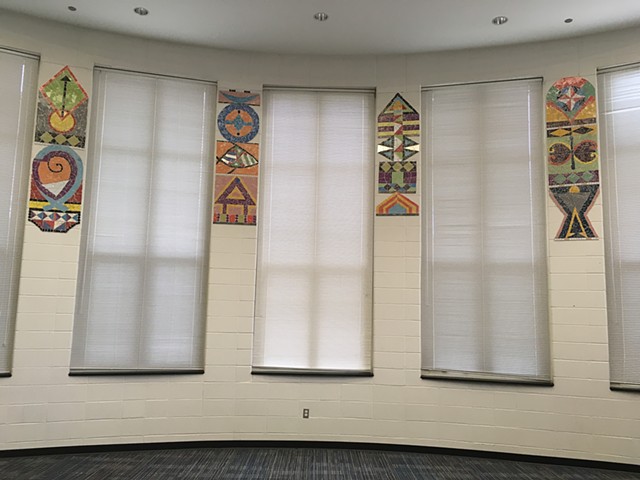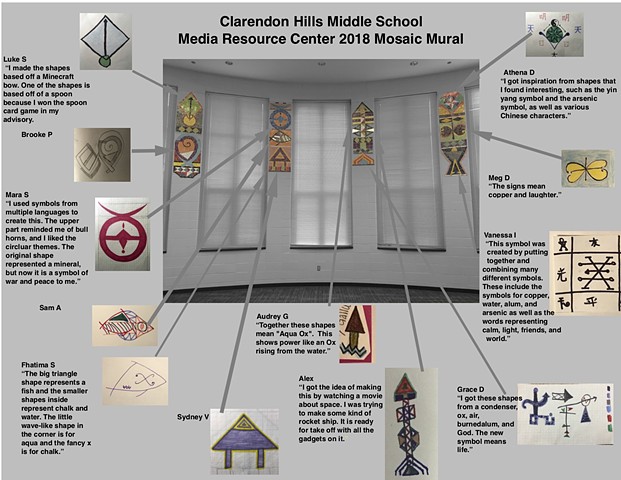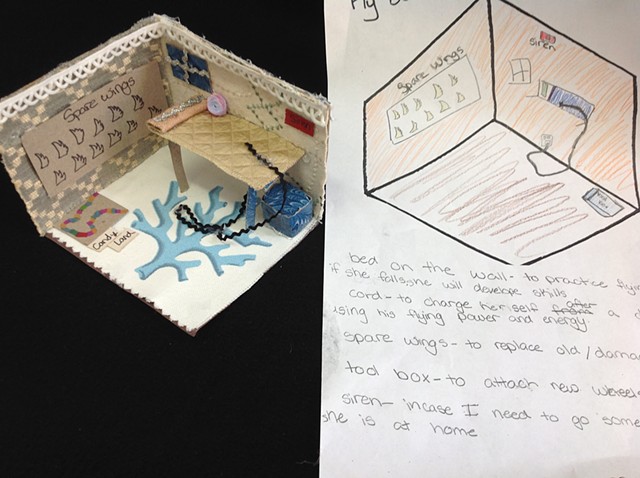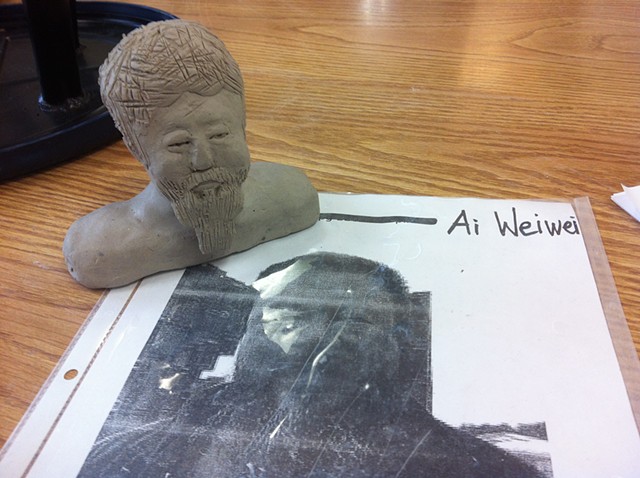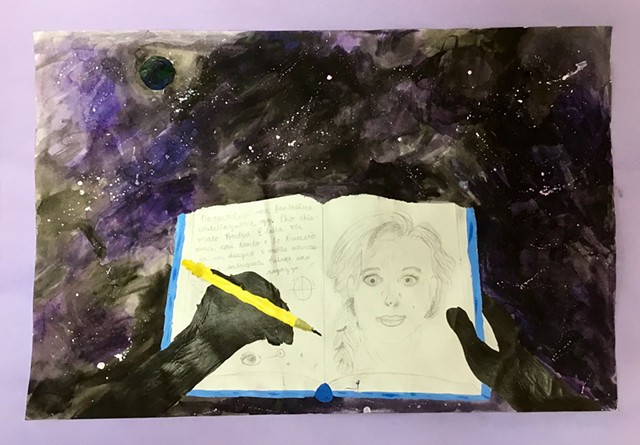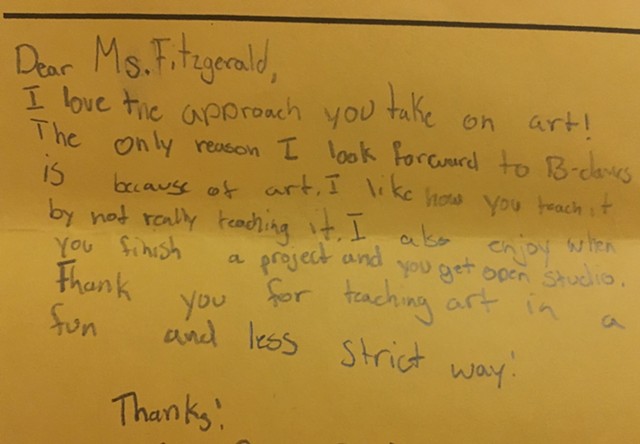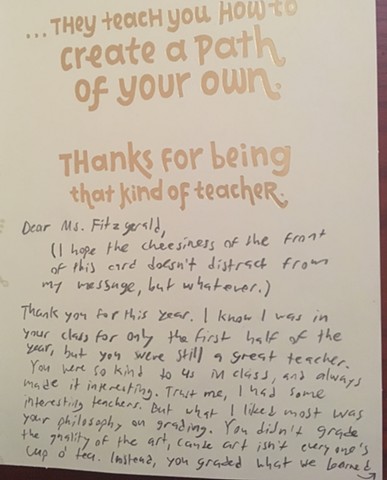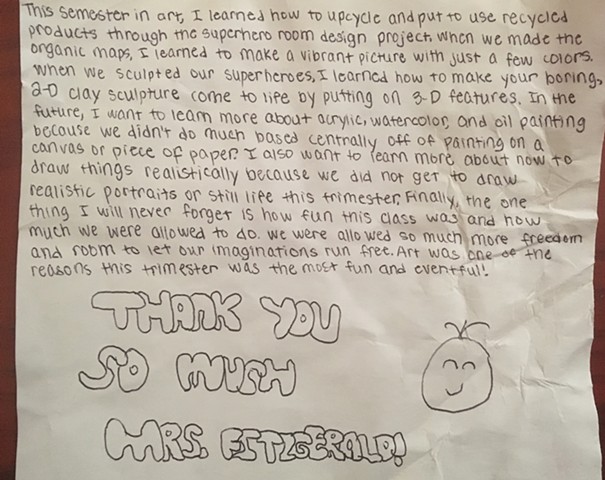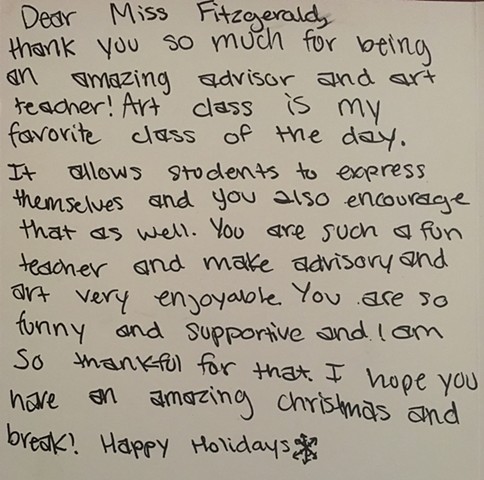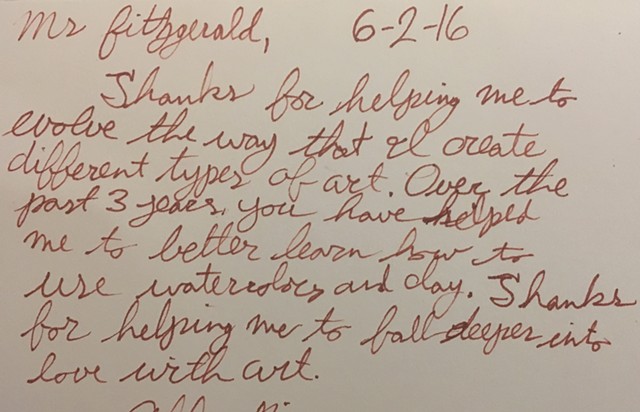Teaching Portfolio / Student Work
Teaching Philosophy
What it means to be human lies at the heart of learning in the art classroom. The art classroom, in particular, can be one of the most important sites for cross-disciplinary exploration and serve as a lifeline to the whole student in his or her emotional and social development. The art room is the seed for our artist-brain and our whole self to develop the habits and skills of responsible, critical-thinking, and compassionate citizens for the rest of our lives. This happens by cultivating an environment of honesty, respect, and authentic communication with students. If I am to expect my students to engage meaningfully in learning, I, as a teacher, must lead by example in being vulnerable, sensitive, and present to the students’ unique needs. This includes recognizing the different learning styles of each student and differentiating instruction and curriculum so that each student has the opportunity to grow.
If we hope to create a thriving culture and a new generation of creative problem-solvers, the art curriculum must continuously build and expand through project-based learning and by offering student-choice, student-ownership, and individual expression wherever possible. When students practice making choices on their own, they naturally rise to their most creative self and motivate themselves from within to go farther and think more deeply. As one student described my approach to assessment: “You didn’t grade the quality of the art...instead, you graded what we learned…” When students are given a nurturing space and abundant trust to make choices with their learning, they learn far more than we can imagine and in more ways than we could ever devise alone.
Artists are inherently both teachers and students of life. Good teachers and their students must think like artists by continually engaging, observing, reflecting, stretching, expressing, and understanding our place in the world. Art teachers must be practicing artists themselves to keep alive the wonder and curiosity required of a mindful inquiring classroom. The art room is a microcosm of the world, dynamic and constantly in flux, with daily discoveries to be made. A good art teacher is prepared with deep knowledge of many tools and techniques but flexible and fluid enough to evolve with emerging practices, technologies, and student life experiences. An example of this open and expanding approach is through collaborative co-teaching such as my Design Lab curriculum, incorporating the best practices of Design Thinking, S.T.E.A.M. philosophy, and Studio Habits of Mind.
Through carefully guided but open-ended projects and in a strategically-designed artist studio setting, all students can experiment, create, reflect, tell their story, and develop a sense of themselves as actors and contributors in the culture we shape together.
-Jean C. Fitzgerald



